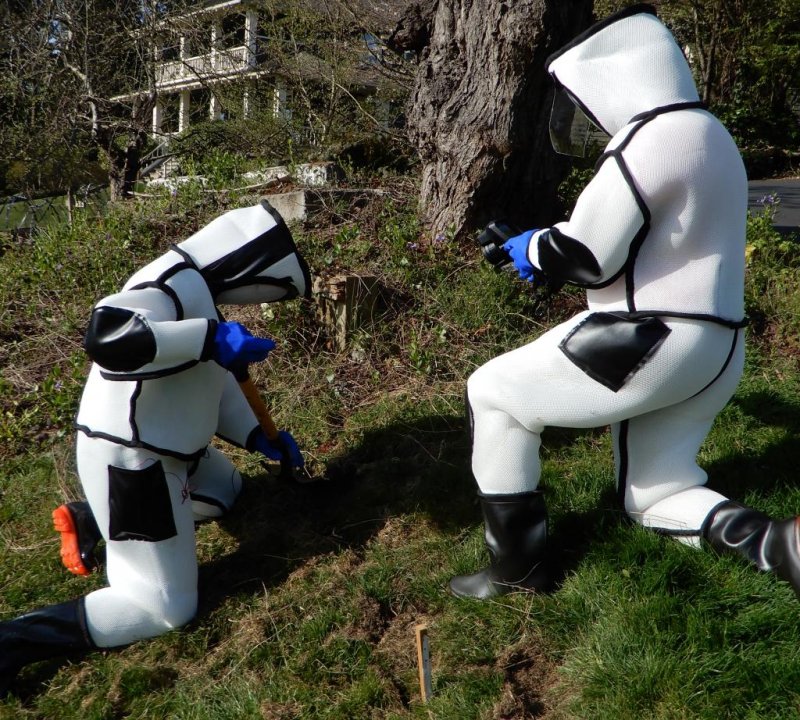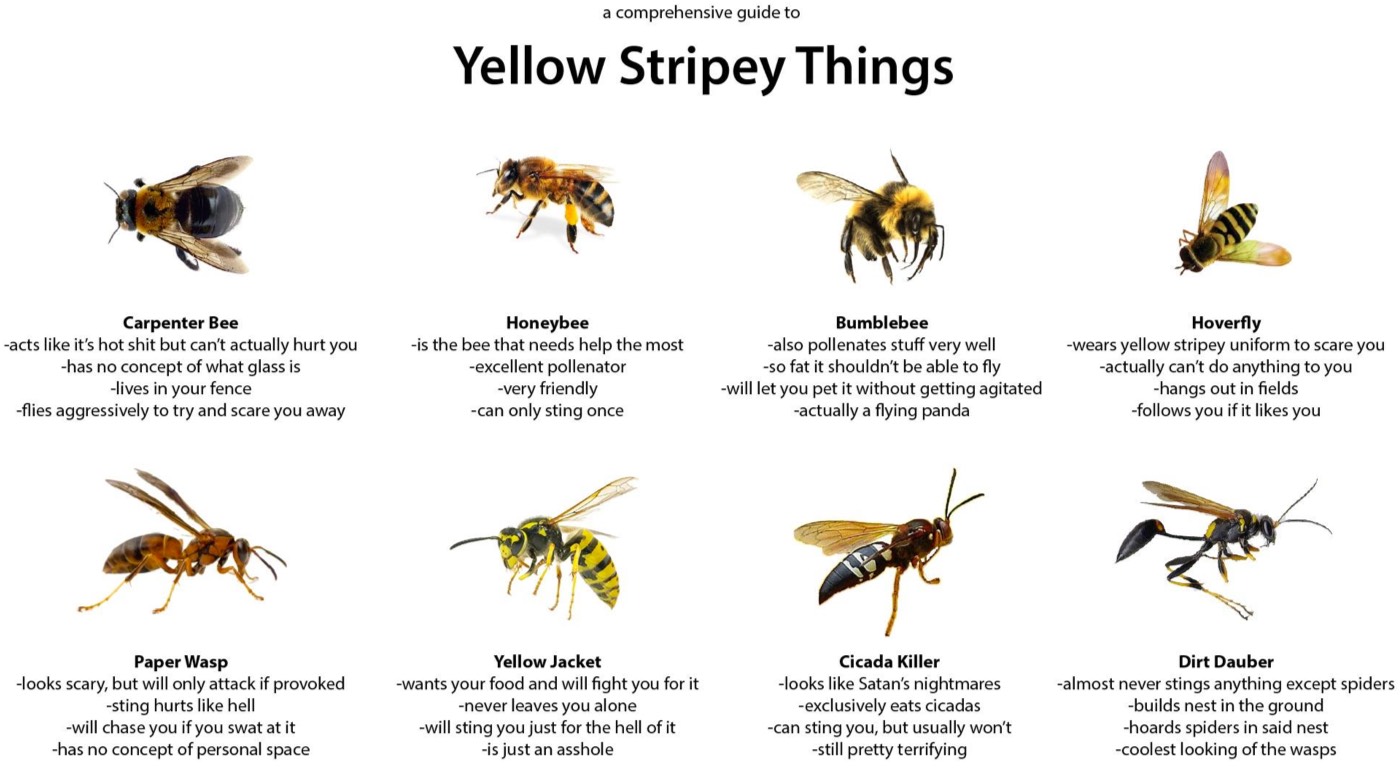MAY THE FOURTH BE WITH YOU

© Provided by The Canadian Press
LETHBRIDGE, Alta. — Police in southern Alberta are being investigated after a restaurant worker in a "Star Wars" stormtrooper costume who was carrying a plastic gun was forced to the ground and ended up with a bloody nose.
"All the signs say 'Star Wars.' The music that was playing in the parking lot was 'Star Wars,'" said Brad Whalen, owner of the Coco Vanilla Galactic Cantina in Lethbridge.
"If a duck's a duck, it's a duck, right. It should have been common sense and it should have stopped there.
Whalen said the 19-year-old employee of the "Star Wars"-themed restaurant had agreed to carry a toy blaster and wear the elaborate white uniform of the soldier of the Galactic Empire to get the attention of people celebrating May 4. The day is popular among fans of the movie franchise because of the famous line, "may the force be with you."
The restaurant, which serves Jabba the Gut pizza and Yoda soda, opened at the end of January and has been struggling due to restrictions put in place during the COVID-19 pandemic. Recently open again, Whalen was hoping to get some attention by having a stormtrooper walking out front of the business.
It got attention, just not the kind he was looking for.
The Lethbridge Police Service said officers were called to the restaurant Monday morning for reports of a person in a stormtrooper costume carrying a firearm. A news release Tuesday said when officers arrived, the person dropped the weapon but didn't initially comply with directions to get down on the ground
Whalen disputes the account that his employee didn't obey police commands. When officers arrived, she immediately dropped the weapon and put her hands up, he said
But Whalen said that the stormtrooper helmet makes it hard to hear and to be heard. It also makes it difficult to move, let alone to kneel or get down on your stomach. Whalen said this may have caused a delay in the employee getting on the ground.
"It's not the easiest thing to kneel down in. You can't even sit down in it. It takes 20 minutes to put on."
Whalen said by that time, police should have been aware that the gun was wasn't real and went with the costume.
A video of the encounter, shared on social media, shows an officer standing by the blaster while Whalen yells from the restaurant door that it's fake.
"It should have been common sense and it should have stopped there. Unfortunately, it didn't stop there. The police chose to escalate it," Whalen said.
Officers forced the employee on to her stomach and she hit her face and her nose started to bleed, said Whalen. In the video, a woman can be heard crying.
Police Chief Scott Woods has reviewed the file and received additional information, including the online video, the police release said. He has directed a service investigation into the officers' conduct and whether they acted appropriately
The woman in the costume was not charged.
Whalen said he's been contacted by lawyers and is looking at different options.
He said something needs to change in police training to ensure situations aren't unnecessarily escalated.
All employees of the restaurant have been impacted by the encounter, he said, none more so than the woman in the costume
"Ironically enough, she wasn't a 'Star Wars' fan," Whalen said. "I don't think she will be a 'Star Wars' fan ... if we had any chance to convert her."
This report by The Canadian Press was first published May 5, 2020
— By Kelly Geraldine Malone in Winnipeg
Lethbridge police criticized for takedown of Star Wars stormtroope

© Screenshot A woman dressed in a Star Wars stormtrooper costume was arrested by Lethbridge police on May 4, 2020.
The Lethbridge Police Service has started an internal investigation after officers drew their guns on a teenager dressed as a Star Wars stormtrooper carrying a toy gun.
The arrest happened around 11 a.m. on Monday. Police say they received two 911 calls about a person in a stormtrooper costume with a weapon.
The person was a 19-year-old female employee of Coco Vanilla Galactic Cantina, a Star Wars-themed restaurant, according to business owner Bradley Whalen. The teen was holding a prop plastic gun as part of her costume.
He said he’d asked his employee to wear the costume and wave to passersby because it was Star Wars Day. The date, May the 4th, is a pun on the film franchise slogan “may the force be with you.”
“We don’t have an issue with the fact that police responded,” said Whalen. “We have an issue with how they responded.”
A partial video of the arrest circulating on social media shows the employee with her hands up and on her knees while police have their guns drawn. Police can be heard yelling at her to get on the ground, although she does not immediately comply. Later the employee can be heard crying.
Editor’s note: The video below contains strong language.
Unbelievable, just got video of this.
*What the hell happened to common sense:
Girl dressed up as a stormtrooper on may4th facing 3 cops with weapons drawn. You can hear her sobbing. I USED TO dress up with the 501st. Probably not anymore @KinelRyan @DDayCobra #FandomMenace https://t.co/x2HrNLMtOL pic.twitter.com/YrS9bBFJVn— X E V I U S S 💬 (@xeviuss) May 5, 2020
Whalen said officers continued to treat the woman aggressively, even after they had determined the weapon was a costume prop.
“You could tell by looking at it, even 10 feet away, that it was a plastic toy,” said Whalen.
He said the woman was handcuffed and forced to the ground, but was later released at the scene of the incident without charges.
On Tuesday, the Lethbridge Police Service issued a news release announcing an internal investigation into the incident.
“Upon reviewing the file and additional information, including video circulating on social media, Chief Scott Woods has directed a service investigation under the Alberta Police Act that will look into whether the officers acted appropriately within the scope of their training and LPS policies and procedures.”
LPS has initiated a service investigation into the actions of several officers who responded to a report of a firearms complaint Monday morning. A public update will be provided after the investigation has been completed and reviewed. #yql https://t.co/hny6aoHYyo— Lethbridge Police (@lethpolice) May 5, 2020
The news release said the girl sustained a minor injury that didn’t require medical attention.
According to police, the employee did not comply with requests to get on the ground. Whalen finds that difficult to believe given her background.
“What a lot of people don’t understand is that this girl is in a criminal justice training program to be a police officer,” he said.
Whalen said the employee is taking a few days to recover from the stress of having guns pointed at her.
He said the incident has led to calls from media organizations across the U.S., and messages of support from as far away as Europe and New Zealand.
“Something has to happen,” said Whalen. “We have been contacted by lawyers who are wanting to help us.”
Lethbridge police say they won’t comment further on the incident until the investigation is complete.
brthomas@postmedia.com

















